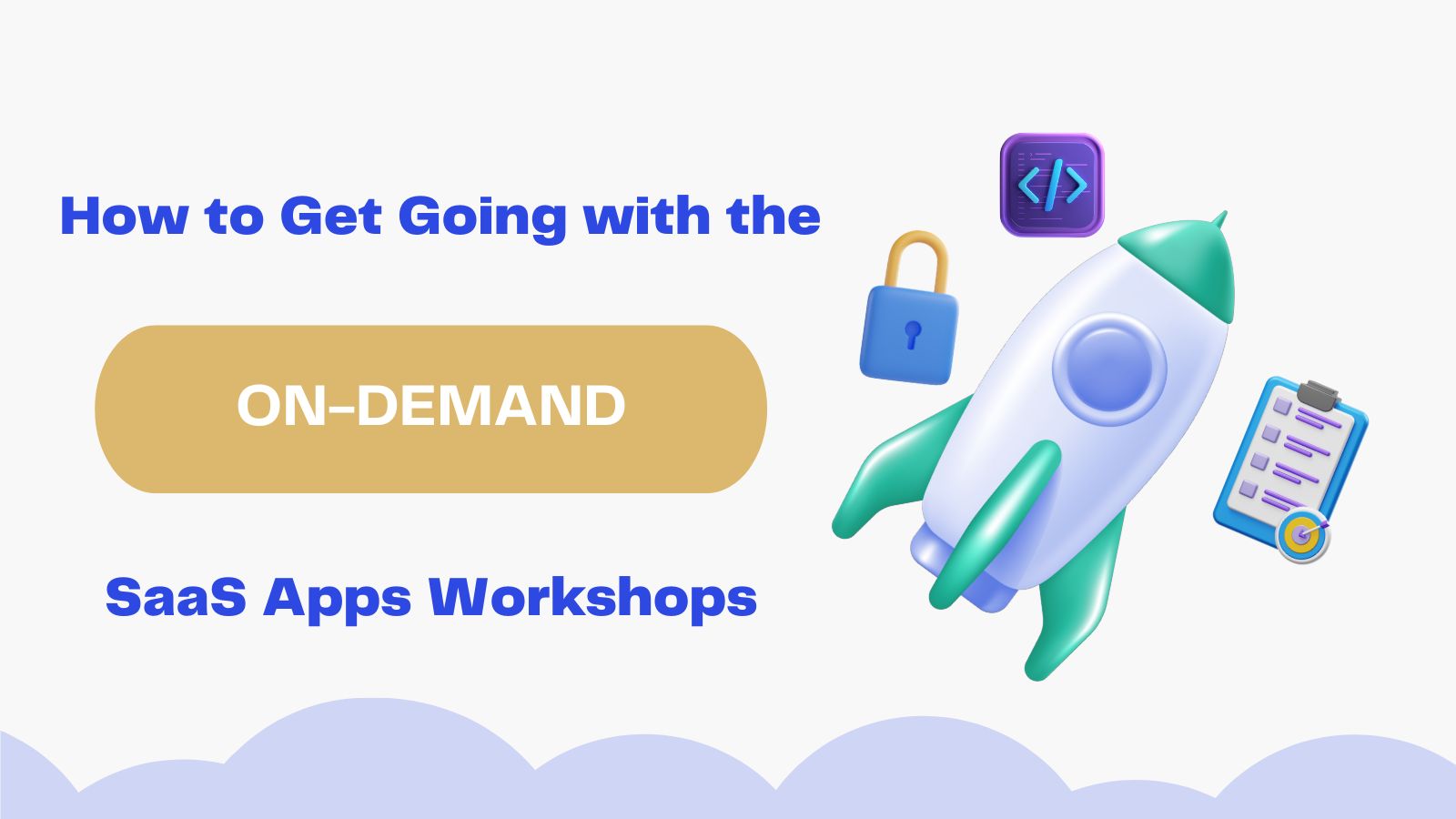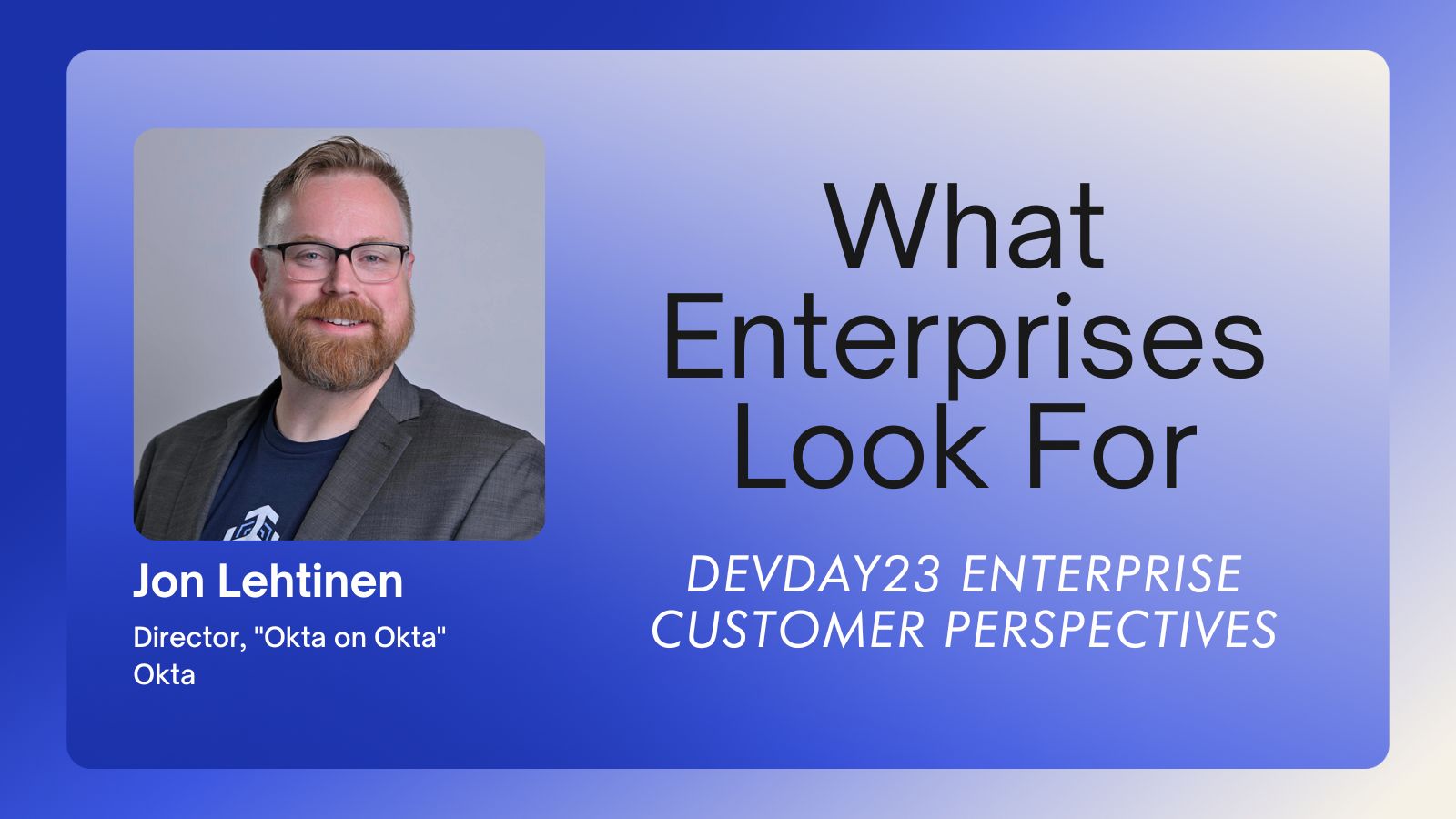July Podcast: Developing Okta's SDKs with Laura Rodriguez and Alisa Duncan

Having libraries that interact with services helps make your coding life easier when developing solutions. You may evaluate and estimate the complexity of your software development projects based on the Software Development Kit (SDK) ease of use. So what makes a great SDK? Building SDKs to delight developers Staff SDK Engineer Laura Rodriguez and Developer Advocate Alisa Duncan join us this month to discuss the SDKs that make Okta’s APIs idiomatically accessible from various languges...
Enterprise Maturity Workshop: Terraform

This workshop is part of our Enterprise-Ready Workshop series. Follow along to get familiar with managing identity as code using Okta’s Terraform provider, so you can assist enterprise customers and simplify any identity setup steps that your product might require. In this workshop, you’ll use Terraform to manage users and groups in an Okta Organization, while practicing beginner and intermediate Terraform skills. Posts in the on-demand workshop series 1. How to Get Going with the...
Enterprise-Ready Workshop: Manage users with SCIM

Hello SaaS developers! You sell your software to technologically mature enterprises, and they expect it to interface seamlessly with all their other tools. In our Enterprise-Ready Workshop on OpenID Connect, you learned how to solve part of this problem, by creating user accounts in your application for your customers’ employees whenever they log in. Posts in the on-demand workshop series 1. How to Get Going with the On-Demand SaaS Apps Workshops 2. Enterprise-Ready Workshop: Authenticate...
Enterprise-Ready Workshop: Authenticate with OpenID Connect

This workshop is part of our Enterprise Readiness Workshop series. In this workshop, you will be wearing the hat of a SaaS developer who will up-level his/her app to allow users (from your big enterprise customers) to log on using their own company credentials without providing a password directly to your app. When any enterprise customer considers buying your software to enhance their employees’ productivity, their IT and security teams want to make sure employees...
How to Get Going with the On-Demand SaaS Apps Workshops

Having an enterprise-ready SaaS application means your application supports authentication best practices, can scale across multiple customers and users, has automated means to re-create environments, and can securely add enhancements and value-adds your customers expect. Join this free virtual workshop series where we take your SaaS application on a journey of enterprise-ready identity — you’ll wear the hat of a SaaS developer preparing your Todo application to support enterprise-level customers who want to use your...
June Podcast: Approaching Automation with Jeff Taylor

Approaching automation in identity Product Manager Jeff Taylor joins us for the first time to discuss the principles behind successful automation. What’s the automation journey, and how does it relate to organizational maturity? How can you scale your work with automation while avoiding the pitfalls of premature optimization? If you’re ready to start automating Okta administration tasks, where should you start? Find the OktaDev Workforce podcast on approaching identity automation Listen to the audio version...
How to Take Your Enterprise-Ready SaaS App Beyond MVP

Ready to move beyond MVP in the journey of adding enterprise-ready identity in your SaaS app? With the must-have functionality in place, you’re ready to make your app stand out, get noticed by enterprise customers, and handle user provisioning and automation that can scale! So what might that look like? 🤔 In this installment of creating an enterprise-ready SaaS app, we’ll cover this and more! Posts in the enterprise-ready Devday23 presentation series 1. What Does...
How to Build an Enterprise-Ready MVP SaaS App

Understanding what enterprise customers look for in a SaaS app is step one, but how do you achieve it? What steps do you take to support enterprise-ready identity in your app? Posts in the enterprise-ready Devday23 presentation series 1. What Does It Mean to Be Enterprise Ready: Devday23 Keynote Enterprise Readiness 2. What Enterprises Look For: Devday23 Enterprise Customer Perspectives 3. How to Build an Enterprise-Ready MVP SaaS App Enterprise-ready identity What do enterprise customers...
How to Add Authentication to .NET MAUI Apps

Have you ever been inspired by a colleague’s work and decided to explore a new tool or technology? That’s what happened to me when my colleague, Andrea Chiarelli, wrote a blog post “Add Authentication to .NET MAUI Apps with Auth0.” As someone who is always looking for ways to improve my skills and stay up-to-date with the latest trends in technology, I was intrigued by his post and decided to try MAUI, but this time...
What Enterprises Look For: Devday23 Enterprise Customer Perspectives

You have a great SaaS application, and know everyone will find your app so productive and wonderful. But you’re ready to move beyond a B2C or a B2B for small companies. You want to go enterprise! But are enterprise customers a different breed? And what sort of things are they looking for? Welcome to the second step of becoming enterprise ready. Join us as we help you prepare your application for enterprise customers. Posts in...